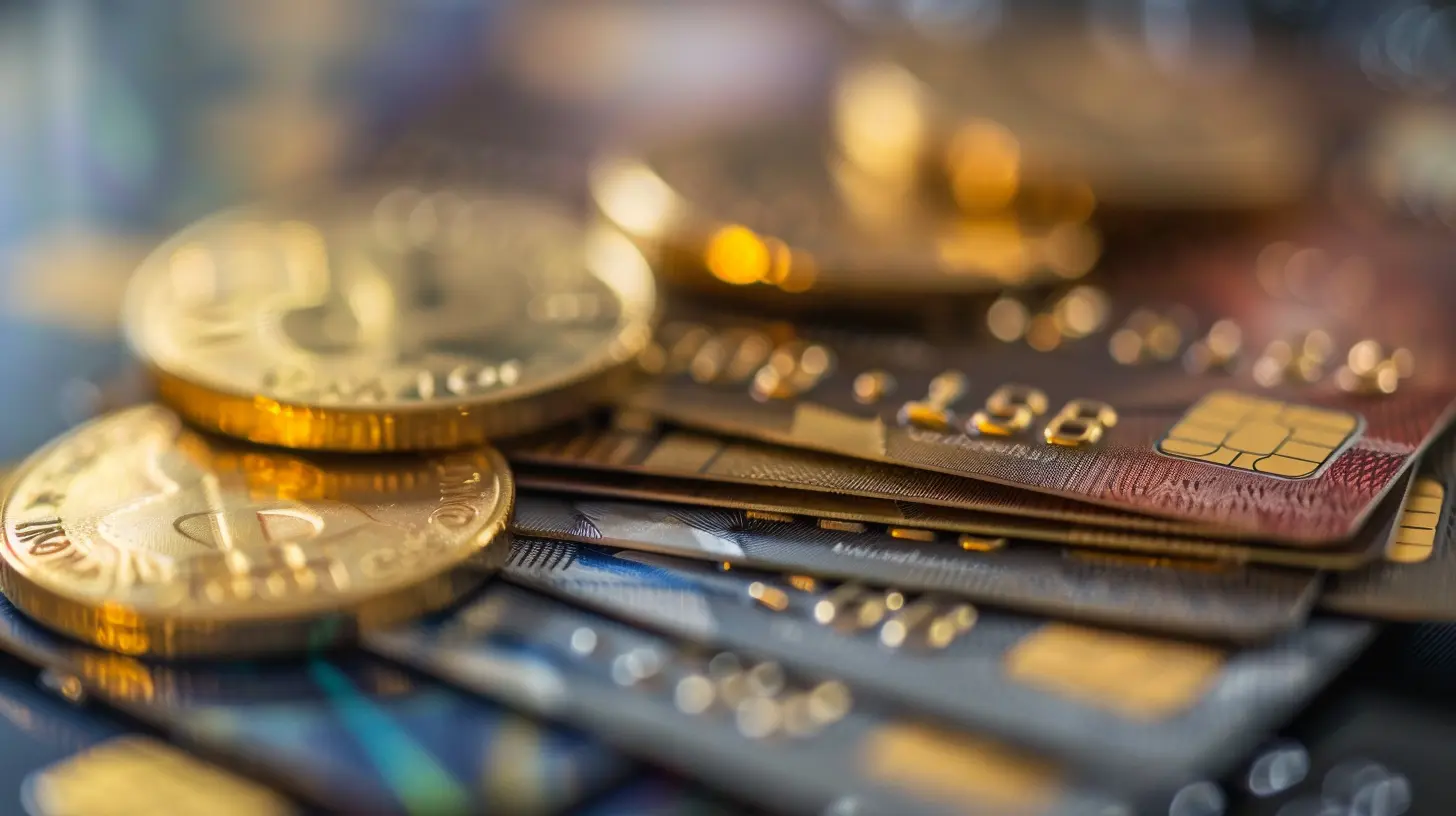How Inflation Influences Consumer Credit and Borrowing Costs
19 May 2025
Inflation—it’s a word that pops up everywhere, especially when prices seem to be skyrocketing. You see it at the grocery store, at the gas pump, even when shopping online. But did you know that inflation also plays a big role in how much it costs to borrow money?
If you've ever wondered why interest rates on loans and credit cards fluctuate, inflation is one of the biggest reasons. Understanding how inflation impacts consumer credit and borrowing costs can help you make smarter financial decisions. Let’s break it all down in a simple, conversational way. 
What Is Inflation?
Before we dive into the nitty-gritty of borrowing costs, let’s first understand what inflation actually is.Inflation refers to the general increase in prices over time, which results in the purchasing power of money decreasing. In simple terms, it means that the same dollar buys less than it used to.
For example, if a loaf of bread cost $2 last year and now it’s $2.50, that’s inflation at work. While inflation is a natural part of the economy, high inflation can have widespread effects, particularly on interest rates and consumer debt. 
How Inflation Impacts Interest Rates
1. Central Banks and Inflation
Interest rates and inflation are tightly connected, mainly because central banks (like the Federal Reserve in the U.S.) use interest rates as a tool to control inflation.When inflation is too high, central banks increase interest rates to slow down borrowing and spending. The logic here is simple: when borrowing becomes more expensive, people and businesses are less likely to take out loans. This, in turn, slows down economic activity and helps control inflation.
On the flip side, when inflation is too low or the economy is struggling, central banks may lower interest rates to encourage borrowing and spending, which can stimulate economic growth.
2. The Role of the Federal Reserve
The Federal Reserve (or any country’s central bank) plays a key role in setting interest rate policies. The Fed adjusts the federal funds rate, which is the rate banks charge each other for short-term loans. This decision influences borrowing costs across the economy, from mortgages to personal loans and credit cards.When the Fed raises interest rates:
- Credit card interest rates go up
- Mortgage rates climb
- Personal loan rates increase
- Auto loan rates rise
And the opposite happens when the Fed lowers rates—the cost of borrowing drops, making loans more affordable. 
Inflation’s Effect on Consumer Credit
1. Higher Interest Rates on Credit Cards
If you have a credit card and carry a balance month to month, inflation can hit you hard. Most credit cards have variable APRs (Annual Percentage Rates) that are tied to the prime rate, which is influenced by the Fed’s interest rate decisions.So, when inflation leads to higher interest rates, credit card rates also rise. This means that carrying a balance costs more, and your minimum payments could increase.
2. Bigger Loan Payments
If you’re planning to take out a personal loan, mortgage, or auto loan, inflation can directly impact the amount you’ll pay in interest.- Home Loans (Mortgages): Mortgage rates tend to rise during high inflation periods, making homeownership more expensive. Even a 1% increase in interest rates can add thousands of dollars in additional costs over the life of a mortgage.
- Auto Loans: Inflation can push auto loan interest rates higher, making monthly car payments more expensive.
- Student Loans: Federal student loan rates are set based on U.S. Treasury yields, which rise when inflation is high, leading to higher borrowing costs for students.
Basically, when inflation is high, borrowing becomes a pricier endeavor.
3. Household Debt Becomes Harder to Manage
When people have existing debt—like credit card balances, student loans, or personal loans—rising interest rates can make repayment harder.For example, if you have a variable-rate personal loan, the interest you owe can increase, leading to higher monthly payments. Over time, this can make managing debt more challenging, forcing some people into financial hardship. 
How Inflation Affects Loan Approval and Credit Availability
1. Tighter Lending Standards
During high inflation periods, lenders often tighten their lending criteria. Why? Because when borrowing costs rise and the economy slows down, the risk of defaults increases.Lenders become more cautious, which means:
- Higher credit score requirements – You might need a better credit score to qualify for a loan.
- Lower loan amounts – Banks might offer lower credit limits or loan amounts.
- Stricter income verification – Lenders want to ensure borrowers can actually repay their loans.
2. Variable vs. Fixed Interest Rates
If you’re shopping for a loan during an inflationary period, you’ll often face a choice: fixed or variable interest rates.- Fixed-rate loans lock in your interest rate, meaning your payments stay the same even if rates rise.
- Variable-rate loans fluctuate with interest rate changes, meaning your payments could increase over time.
In times of high inflation, locking in a fixed-rate loan can be a wise move to protect yourself from rising rates.
How Consumers Can Navigate Inflation and Borrowing Costs
Now that we understand how inflation impacts borrowing, let’s talk about how you can manage your finances effectively during high inflation periods.1. Pay Off High-Interest Debt
Since credit card interest rates tend to rise with inflation, focus on paying off high-interest debt as quickly as possible. Consider:- Making more than the minimum payment
- Using the debt snowball or avalanche method
- Transferring your balance to a lower-interest card (if possible)
2. Lock in Fixed-Rate Loans
If you’re planning to take out a mortgage, auto loan, or personal loan, consider locking in a fixed-rate loan to protect yourself from future rate increases.3. Improve Your Credit Score
During inflationary periods, lenders become stricter, so having a strong credit score can help you secure better loan terms. Improve your credit by:- Paying bills on time
- Reducing your credit utilization
- Avoiding unnecessary hard inquiries on your credit report
4. Build an Emergency Fund
High borrowing costs mean relying on credit during financial emergencies can be risky. Instead, build an emergency fund to cover unexpected expenses without having to rely on high-interest debt.5. Refinance When Rates Drop
If inflation eventually cools and interest rates decrease, refinancing loans (like mortgages or student loans) can help lower your borrowing costs. Keep an eye on interest rate trends and refinance when rates are favorable.Final Thoughts
Inflation impacts nearly every aspect of our financial lives, and borrowing costs are no exception. When inflation rises, interest rates follow, making it more expensive to carry credit card debt, take out a loan, or finance big purchases.Understanding these dynamics can help you make informed financial decisions. Whether it’s paying off high-interest debt, locking in a fixed-rate loan, or improving your credit score, small steps can help you navigate inflation’s impact on borrowing more effectively.
At the end of the day, being financially savvy means staying ahead of the game—so keep an eye on inflation trends and adjust your borrowing habits accordingly!
all images in this post were generated using AI tools
Category:
Inflation ImpactAuthor:

Harlan Wallace
Discussion
rate this article
4 comments
Aaron Sanders
Inflation is like that friend who always shows up uninvited and eats all your snacks, leaving you with higher borrowing costs and a credit hangover!
May 25, 2025 at 11:08 AM

Harlan Wallace
That's a clever analogy! Inflation does indeed impact consumer finances, making borrowing more expensive and budgets tighter.
Bear McNulty
As inflation ebbs and flows, the shadows of consumer credit shift. Are we prepared for the hidden costs lurking ahead?
May 23, 2025 at 10:44 AM

Harlan Wallace
Absolutely, the interplay between inflation and consumer credit is complex. As inflation decreases, borrowing costs can shift, but hidden fees and interest rates can catch consumers off guard. It's crucial to stay informed and vigilant.
Winona Kane
Inflation: Credit's stealthy price tag.
May 22, 2025 at 11:22 AM

Harlan Wallace
Thank you for your insightful comment! Indeed, inflation subtly impacts borrowing costs, affecting consumer behavior and credit accessibility.
Marni McVeigh
Inflation directly impacts borrowing costs and consumer credit availability.
May 20, 2025 at 2:09 PM

Harlan Wallace
Absolutely, inflation increases borrowing costs by prompting lenders to raise interest rates, which can tighten consumer credit availability.



